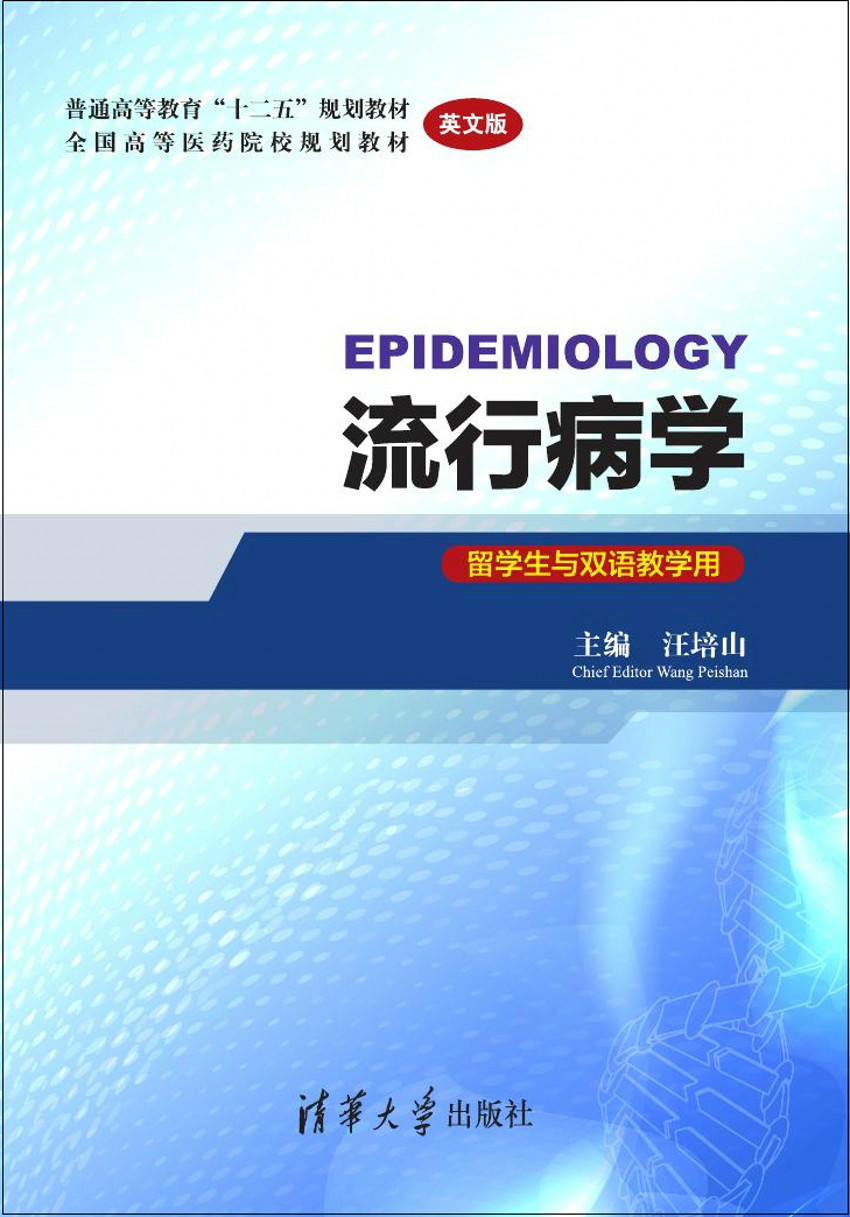內容簡介
本教材系統地介紹了流行病學的基本原理和方法,內容簡明易懂,每章後面附有重要專業辭彙和部分練習題,適合初學流行病學的臨床醫學專業的留學生和本科生雙語教學作為入門教材,也可以作為其他醫學相關專業,如護理學、口腔醫學、藥學、公共衛生服務等專業的學生學習流行病學的教材。本教材也可以供衛生專業工作人員學習和套用流行病學參考。
圖書序言
The main goal of public health is to prevent and control disease in human populations. To reach this goal, we attempt to understand the nature of diseases, explore the causes of diseases, take action (public health programs) and evaluate the effectiveness of the actions. Epidemiology plays a crucial role in realizing this goal and deciding which public health programs to develop as well as in evaluating those programs.
In recent decades, it appears that epidemiology has increasingly become a very important approach, not only for public health but also for clinical medicine and other areas of medical research and practice. Advances in computer design and availability and the development of advanced statistical methods and readily accessible powerful software have made it feasible to manage and statistically analyze very large databases. Epidemiological techniques have been applied to many areas of biomedical research and as a result, quite a few branches of epidemiology have emerged. Today, you might find epidemiologists who specialize in chronic disease or infectious disease epidemiology or in genetic epidemiology or in molecular epidemiology or in pharmacoepidemiology or nutritional epidemiology, to name only a few of the specialties.
The aim of this book is to provide an overview of principles of epidemiology for students of clinical medicine. It is also usable for the students of other health professions such as nursing, dentistry, pharmacy, public health service etc. It also can be used as the reference book for other health professionals. For medical students, this book assumes that they have successfully finished a short course of medical statistics.
In this textbook, most of the chapters in Part one are concentrated on the basic principles concepts and methodology of epidemiology (first 10 chapters). The remaining chapters in the second part consist of some applications of epidemiology. These may be selected by instructor for lecture or for used by students as selfreadings.
It is important to note that this textbook just serves as an introduction of epidemiology. Because of the obvious constraints of any single textbook, it does not comprise an exhaustive answer to many questions in epidemiology. I would appreciate any suggestions on what and how the contents of this book can be improved.
Wang Peishan
Department of Epidemiology and Biostatistics
School of Public Health
Tianjin Medical University
Tianjin, China
October 2014
圖書目錄
Part OneFundamental Epidemiology
Chapter 1Introduction
1. What is epidemiology?
2. Brief history of epidemiology
3. An overview of methods of epidemiologic studies
4. Goals of epidemiology
5. Natural history of disease
6. Epidemiology and three levels prevention
7. Epidemiology and clinical medicine
Summary
Study Questions
References
Chapter 2Measures in Epidemiology and Sources of Data
1. Introduction to measures in epidemiology
2. Measures of disease occurrence
3. Other descriptive population health measures
4. Sources of data
Summary
Study Questions
References
Chapter 3Communicable Diseases
1. What is a communicable disease?
2. Some key concepts of communicable diseases
3. Approaches to the control of communicable disease
4. Infectious disease process
5.The descriptive epidemiology of communicable disease
6. Public health surveillance
7. Epidemic or outbreak investigation
Summary
Study Questions
References
Chapter 4Survey and Crosssectional Studies
1. Introduction
2. Steps in designing and conducting a survey
3. Sampling
4. Data gathering approaches
5. Biases in health surveys
6. Advantages and pitfalls associated with crosssectional studies
Summary
Study Questions
References
Chapter 5Cohort Studies
1. What is a cohort study
2. Design of cohort study
3. Cohort selection
4. Data collection
5. Analysis and result interpretation
6. Sample size consideration for a cohort study
7. Potential biases in cohort studies
8. Advantages and disadvantages of a cohort study
Summary
Study Questions
References
Chapter 6Casecontrol Studies
1. What is casecontrol study?
2. Design of casecontrol study
3. Data analysis
4. Biases in casecontrol study
5. Sample size consideration
6. Advantage and problems of casecontrol study
7. Nested casecontrol study: brief introduction
8. Comparison of characteristics of casecontrol study and cohort study
Summary
Study Questions
References
Chapter 7Experimental Studies
1. Introduction
2. Example of clinical trials
3. Study designs for randomized controlled trial
4. Sample size consideration
5. Analysis and result interpretation
6. Advantages and disadvantages of experimental studies and compliance
7. Ethical aspects of experimentation with human subjects
8. Assessing the quality of a trial
Summary
Study Questions
References
Chapter 8Association and Causation
1. Concept of cause in epidemiology
2. Association and causal association
3. Evaluating causal association
Summary
Study Questions
References
Chapter 9Bias and Confounding
1. Introduction
2. Overview of bias
3. Impact of bias
4. Confounding
Summary
Study Questions
References
Chapter 10Screening and Early Detection
1. Introduction to screening and early detection
2. Criteria for establishing a screening program
3. Population screening tools
4. Validity, reliability and error
5. Evaluation of screening programs
Summary
Study Questions
References
Part TwoApplications of Epidemiology
Chapter 11Application of Epidemiology in Clinical Practice
1. Prognosis
2. Clinical decision analysis
3. Evidencebased medicine
References
Chapter 12Molecular and Genetic Epidemiology
1. Definitions and distinction
2. Study methods
References
Chapter 13Application of Epidemiology on Public Health Service
1. Public health and public health operations
2. Epidemiological model of the delivery of health care services
3. Epidemiology and the public policy process
4. Translational research and translational epidemiology
References
Chapter 14Descriptive Epidemiology in Cancer: Measures of the
Cancer Burden
1. Cancer incidence and prevalence
2. Cancer mortality
3. Survival rates
4. Temporal trends
5. Geographic variation of cancer
References

